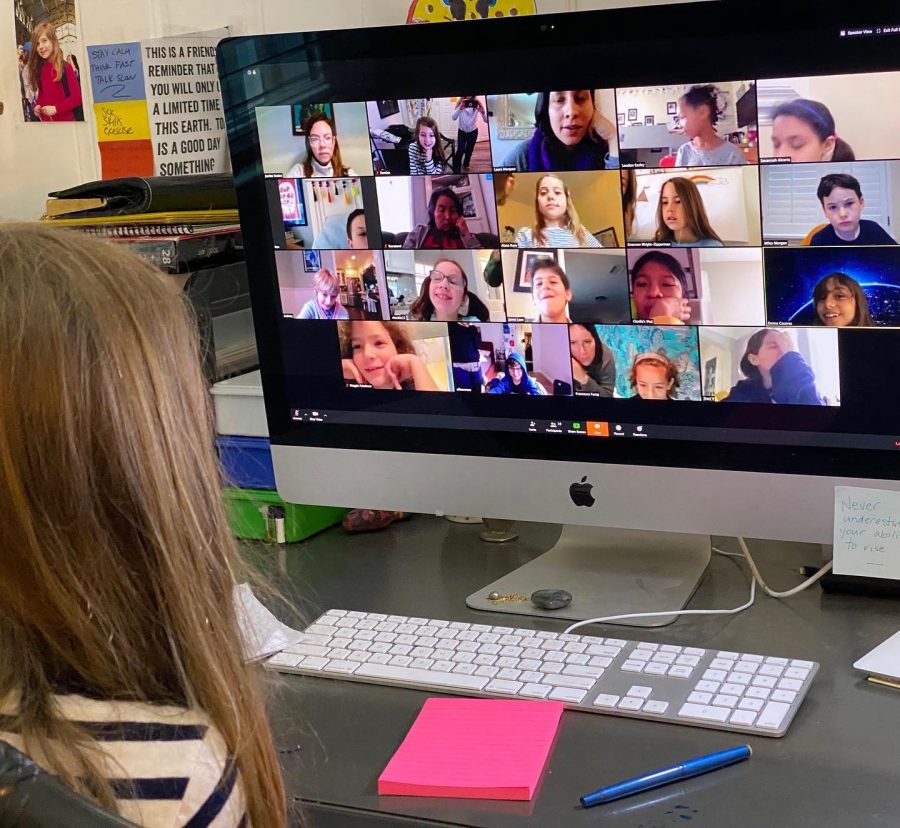How has Remote Learning Changed Education?
Photo Courtesy of @childrenscommunityschoolvannuys on Facebook
A student learns from home through Zoom.
March 15, 2021
Mamaroneck High School, like many of the other high schools in our region, made the decision to reopen for optional and limited in-person instruction in the Fall of 2020. Despite the robust safety protocols enacted by our district, a sizable contingent of students elected, or have since elected, to continue fully remote education during the ongoing school year. Members of The Globe staff met and discussed the motivations behind fully-remote learning, as well as the cultural implications of this contemporary medium.
For many students, opting to go fully-virtual was more of a necessity than a preference. Family health situations, as well as broad concerns about transmission risks amidst a pandemic mean that many students did not feel as if hybrid learning was a viable option. For most of the fully-remote students on The Globe staff, parental health concerns were the primary reason they chose completely virtual learning. Clearly, the creation of a synchronous, integrated virtual experience was a “must-do” for the district, as there is ample demand for low-risk learning alternatives, especially amongst families with certain health circumstances. A remote learning option was an imperative; there is no debate around that, however there are aspects of the experience that are less than ideal.
Remote learning has totally changed the concept of a “class”. Unfortunately, “class discussions” are often abridged or modified to fit the parameters of a hybrid lesson. “Breakout rooms” are insufficient alternatives for lively classroom exchanges, and many students have indicated that remote classmates often turn off cameras and do not participate if the teacher is not in the breakout room. This makes it hard to fully engage oneself in the material. Additionally, student’s have indicated that the ability to participate varies wildly from class to class. In some classrooms, remote students are required to participate frequently in class discussions. In others, remote learners are merely an afterthought, observing the in-person cohort discuss the material.
Generally, students agree that adequately comprehending the lessons is more difficult at home than in person, yet many remote students feel as remote assessments are often extremely manageable, due to the “open-note” nature of most virtual tests. This means that a lapse in learning may not be reflected by a lapse in grades, perpetuating a cycle of falling behind on material, and “learning for the test” as opposed to total comprehension. Conversely, some students feel that many remote assessment apparatus are substantially more difficult, as they lack the ability to “mark up” a physical test like they otherwise would be able to. Despite these problems, remote learners largely feel as if they made the right choice.
There are some fantastic positives associated with remote learning. Students are often getting almost an hour more of sleep, without missing any class time. For many families, not having to drive a child to and from school has been a huge relief in such a difficult time. Remote lessons are also recorded, meaning students have the ability to review lessons in a manner they were previously unable to. Remote learning, broadly speaking, is incredibly convenient. Students can take naps during free periods, enjoy a home cooked meal for lunch, and still receive a high quality education, while protecting their families from any transmission risks. This is a new culture, and only time will tell if virtual learning will be a relic of the COVID 19 pandemic, or a new way that millions of student’s will receive their education for years to come.







